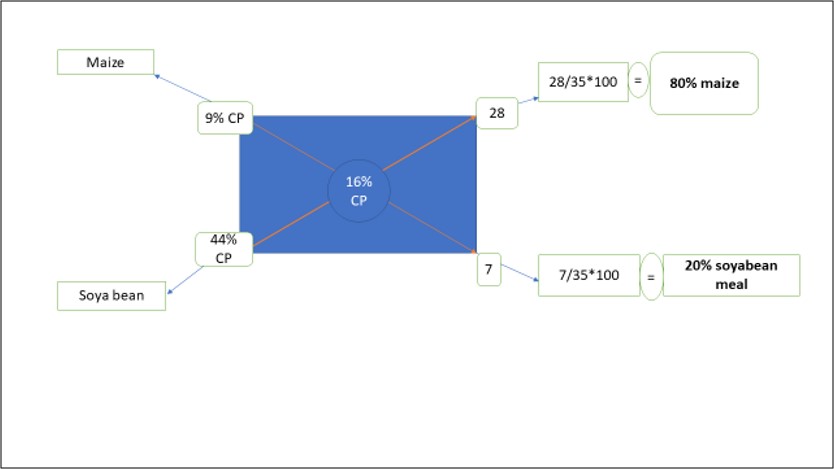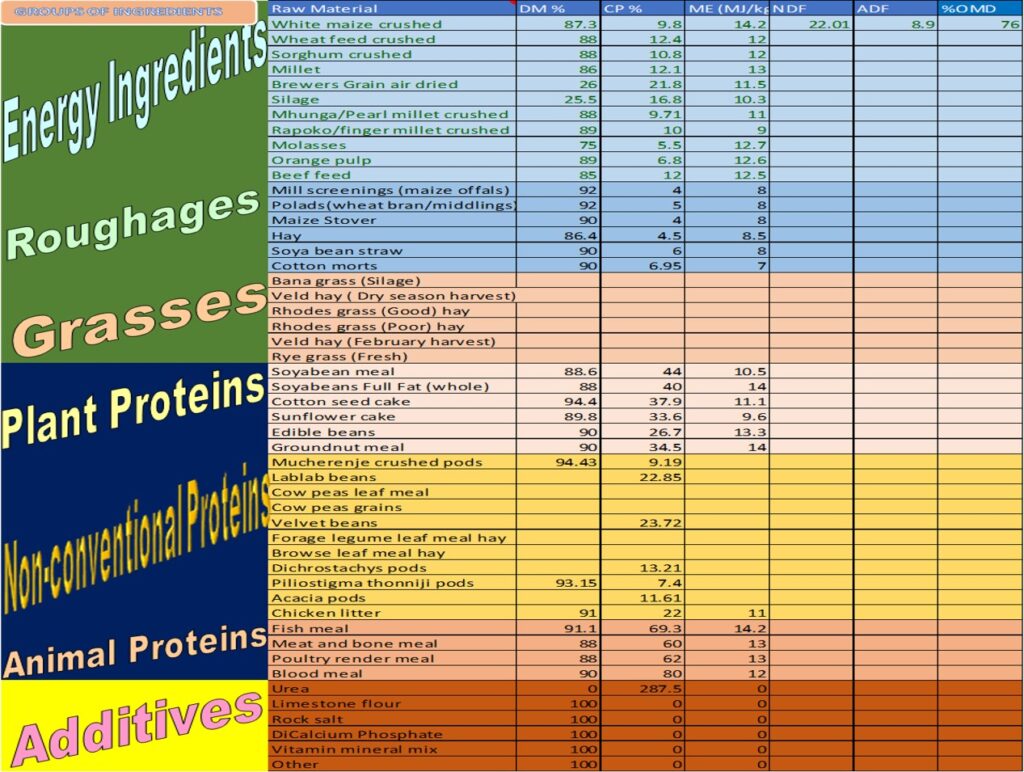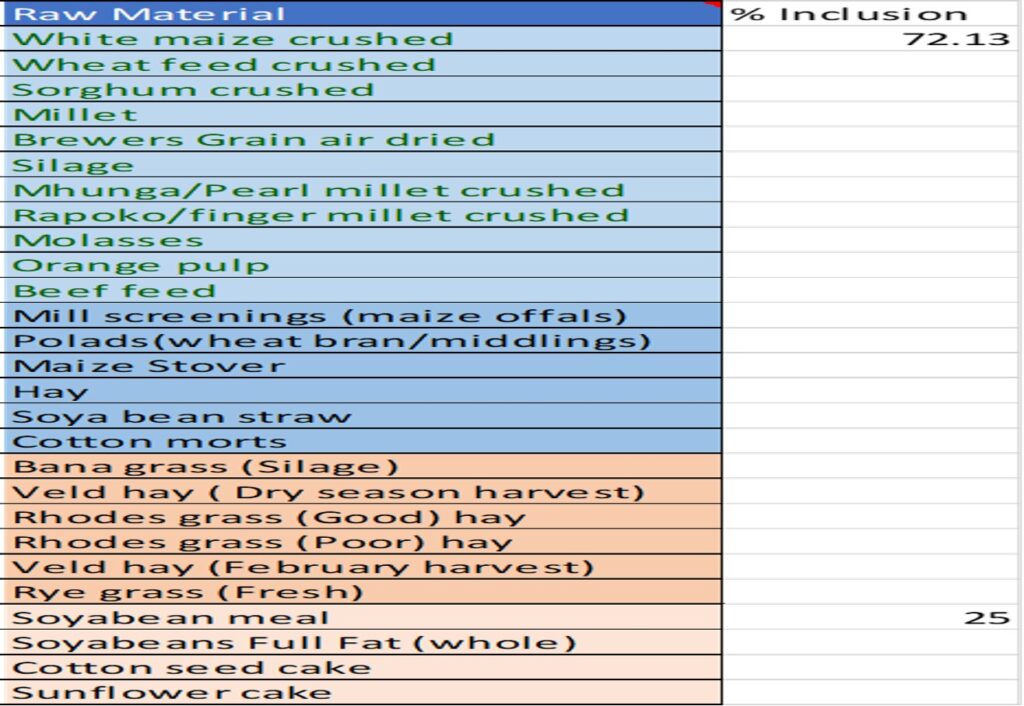On-farm feed formulation (Beef, Dairy, Goats, and Sheep)
By Dr Jacob Gusha
Objectives
- Understand body condition score assessment
- To introduce learners to the required nutrients for maintenance, optimum livestock growth and reproductive performance.
- To classify nutrients and their sources.
- To inform learners of the negative and positive results of supplying the nutrients.
- Kurima ndove issues
Introduction
- The quality of feeds offered to livestock influences their overall performance.
- Fast growth rate can be achieved by addressing nutritional deficiency and ensuring proper feeding is carried out.
- Providing high nutritive value feed to ruminants is associated with fast growth, increased rates of twinning, reduced age to reach puberty and slaughter weights hence the overall profitability of the livestock enterprise.
- The mortality rate of both mature and young animals and their susceptibility to diseases can be significantly lowered with adequate provision of quality feeds.
- For smallholder farmers to be profitable, they should pay extra attention to animal feeding and the body condition score of their animals.
- When the feedstuffs are limited in quality due to seasonal fluctuations, farmers should provide supplements that address the nutritional deficiencies.
- Monthly assessment of the BCS is critical for feed formulation and suplementary feeding
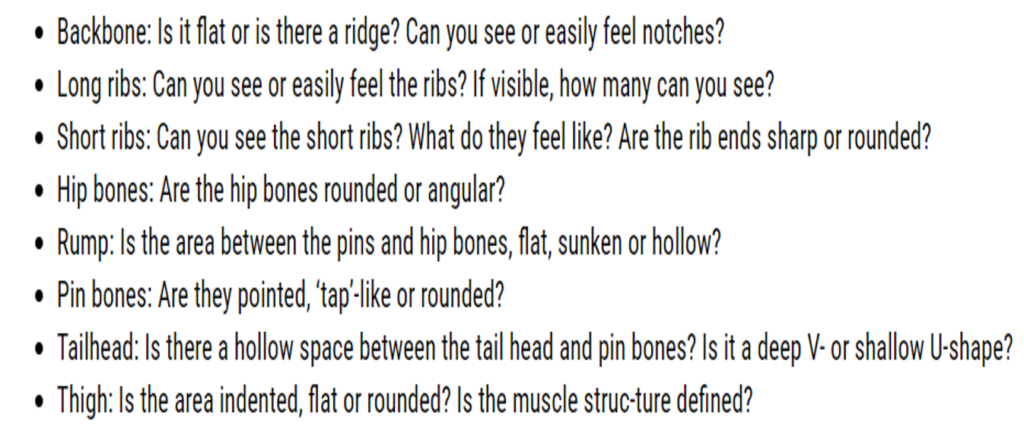
Acknowledgement: The pictures and notes on this ppt were obtained from an article written by PIETMAN BOTHA on Assess the body condition of cows (Dec 2023)
https://www.grainsa.co.za/assess-the-body-condition-of-cows accessed on 11/06/2023
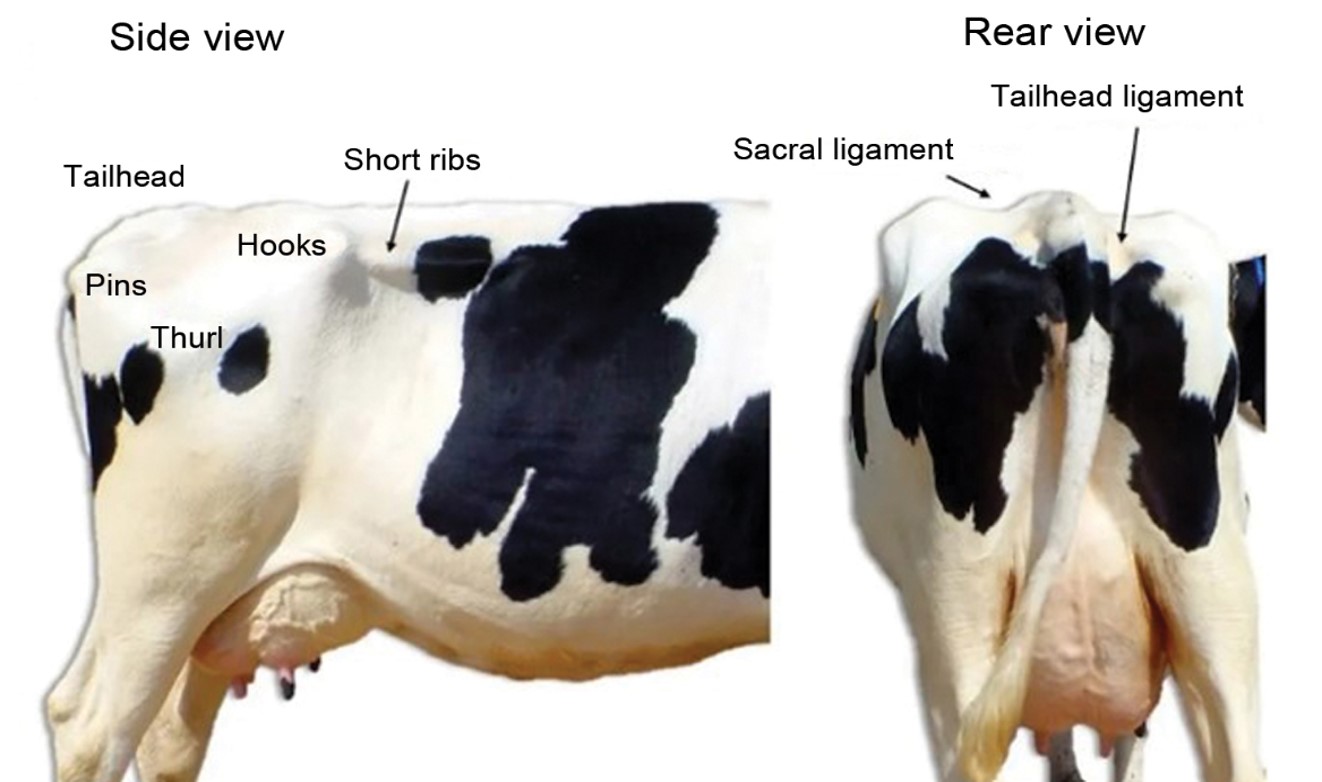
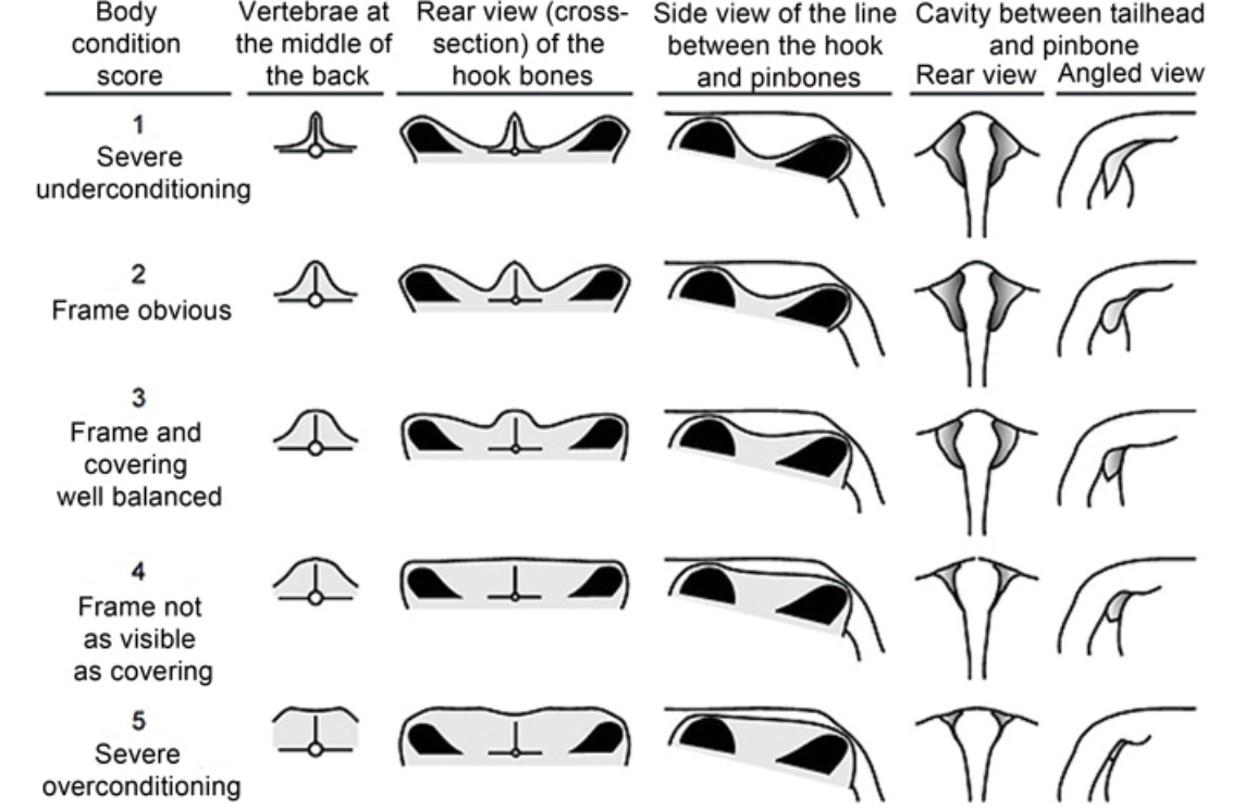
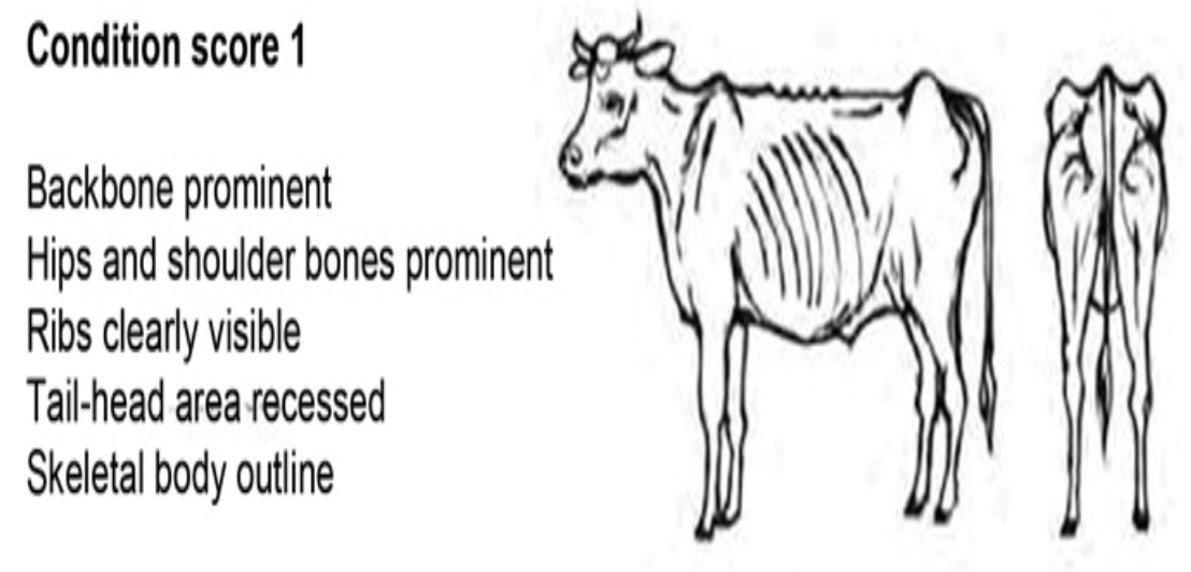
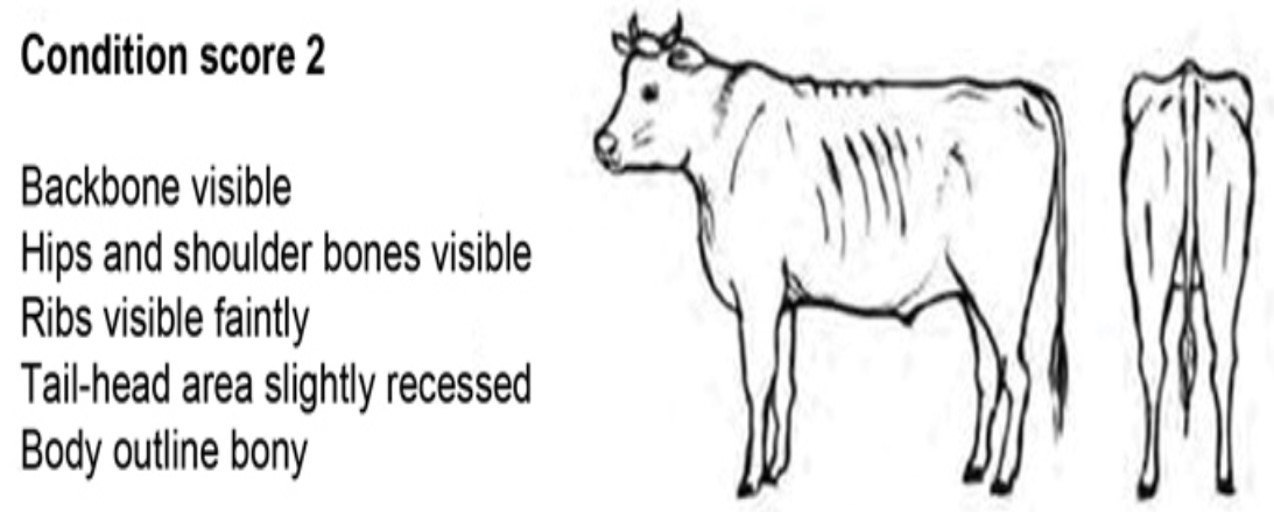

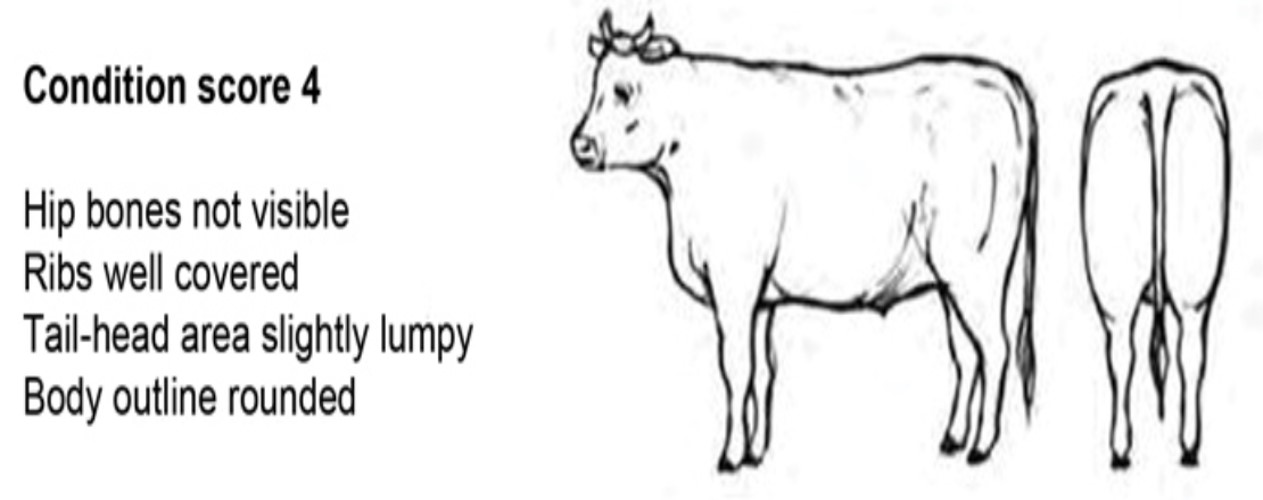
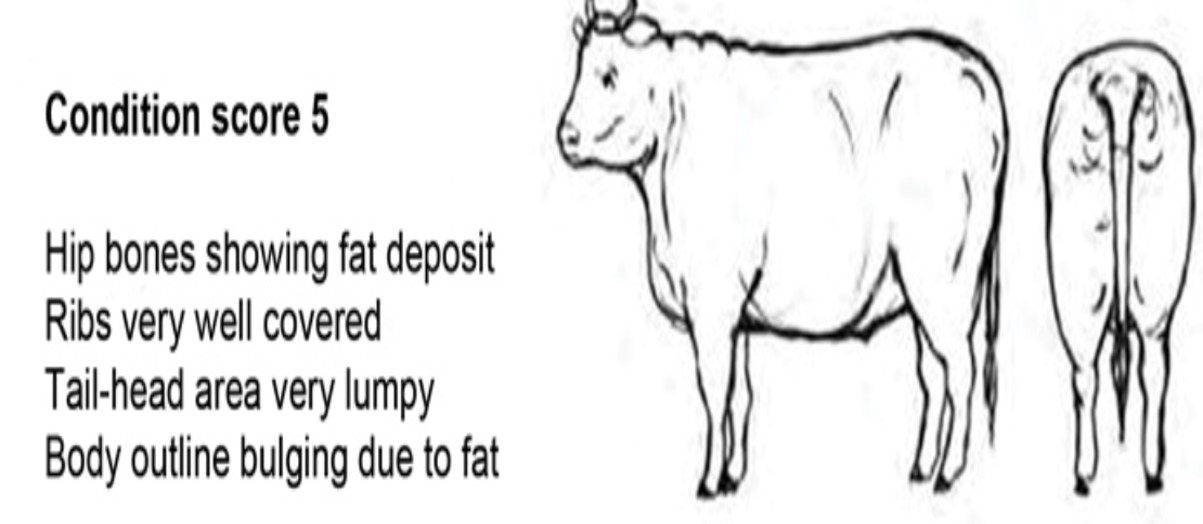
- Feed is the most important input in any livestock production.
- More than any other factor identified in the veterinary management of livestock, the diet has a profound effect on the general health of both individual animal and the herd.
- The diet offered has a great impact on both health and productivity.
- When feeding ruminants, the most important goal is to achieve optimal health as reflected in
oProductivity
oReproduction
oPerformance
- For a profitable ruminant enterprise, 80% of nutrient requirement should come from forages and good quality hay.
- It should be noted that it is of paramount importance to feed ruminants with diets that supply adequate nutrients for each intended purpose of production.
- The feed must contain the nutrients in the right quantities and a correct method of feeding should be used.
- Farmers who fail to adhere to a correct feeding regime at each production stage may not be able to realise profits.
- Ruminant farmers should aim at minimizing feed costs if profits are to be maximized hence, it may be necessary to use the least-cost high performing ration.
- Successful farmers manipulate feed ingredients to maximize productivity.
What is a feed?
Feed or feedstuff is all edible material, which after ingestion by the animal is capable of being broken down into simple molecules called nutrients.
A nutrient is a name given to the different constituents of feed that are utilized by the body.
Most feeds contain several kinds of nutrients but no one ingredient has all the nutrients that the body needs hence there is a need to use a variety of ingredients.
These ingredients/sources are broadly grouped into five namely:
o Energy sources, e.g. hay, maize stover, sorghum stover grain, cereal grains.
o Protein sources, e.g. cotton seed cake, browse legume hay, forage legumes, sunflower cake, cowpeas, velvet bean, lablab, non-protein nitrogen (urea), etc.
o Mineral supplements, e.g. commercial mineral and vitamin premix, limestone, etc.
o Vitamin supplements
o Feed additives or non-nutritive additives, e.g. molasses, etc.
A total mixed ratio contains all the above nutrients to satisfy the nutrient requirement for each stage of production.
Every stage of production, level of productivity, age, breed and physiological status demand a specific diet hence the level of inclusion of these feedstuffs varies accordingly.
Hence, there is no universal feed, one glove fits all.
Nutrients
- Nutrients are any food /feed constituents or groups of food/feed constituents of the same general chemical composition that aid in the support of life.
- The nutrients obtained from feedstuffs are important for energy release, growth, repair, various secretions, storage, and transport, maintenance of internal osmotic and pH environment.
- This implies that nutrients in feed are responsible for preserving life and growth.
- Ruminants require six categories of nutrients namely protein, carbohydrates, fats, vitamins, minerals and water.
- Feeds are digested; nutrients absorbed and assimilated utilised to satisfy metabolic needs i.e. being transformed into body elements of the animal.
- If the six nutrients are not provided in sufficient quantities suboptimal reproduction, stunted growth and poor animal productivity will be experienced.
- Furthermore, if there are shortages of nutrients, metabolic or deficiency diseases and death may occur.
- It is therefore mandatory that any diet given to any animals should have these nutrients to remain healthy and productive.
- Deficiencies in nutrient supply in female animals are like contraceptive pills which can stop the oestrus cycle, a condition called nutritional anoestrus.

Nutrient requirement and Ration Formulation
- No single feedstuff can supply all the nutrients required for all body functions.
- The different feedstuffs must be mixed in proportions to satisfy the nutritional requirements for a particular type of ruminant.
- Feedstuffs from animal sources are better (but expensive) than feedstuffs from plant sources as they have a better balance of nutrients.
- The availability of feedstuffs usually limits production especially in arid and semi-arid areas and certain seasons.
Feeding standards
- It is a prescription
- Prescribes the amount of dry matter and the amount and proportion of various digestible nutrients to be fed to a specific animal.
- The quantity and quality of nutrients required by an animal to remain healthy and highly productive.
- Are set following:
- Productivity
- Milk, meat,
- Composition of the product
- Fat content in milk
- Physiological condition
- Growth, foetal development
- Productivity
- It also differs from animal according to;
- Breed
- Age
- Intended Use
- Consideration is also given to varying regional conditions
- Feeding standards are just but approximate guide regarding these various requisites of rations.
- No feeding standard yet gives any concrete advice.
- May be expressed in quantities of nutrients or the proportion of the diet.
- Energy requirements of ruminants’ may be stated in net energy, metabolic energy or feed units
Principles of formulating rations
- Various methods are used to calculate the proportions in which feed ingredients have to be blended to produce a balanced diet.
- The complexity is proportional to the number of ingredients that have to be included in the final formula.
- The formulation of feeds at the farm level is very important to the farmer.
- The process reduces the amount of money to be spent on feed.
- Mixing different ingredients to produce a feed with a balanced nutrient profile to meet the specific demand of a ruminant at a specific growth stage is vital.
- The methods are
oTry and error methods,
oThe Pearson Square method,
oAlgebraic equation (summation) method,
oLinear Programming methods and
- Computer-Aided Methods..
Feeding strategy
- Feeding strategies that optimize rumen function also maximize milk production and milk component yield.
- Although fat, protein and lactose increase in proportion to milk volume, milk composition changes are minimal.
- Maximizing feed intake is critical to minimize the negative energy balance during early lactation.
- Increasing energy intake will increase milk protein content. High producing cows should eat 3.5 to 4.0 percent of their body weight daily as dry matter.
- On high grain diets increasing the feeding frequency of forage can increase the milk fat levels; during hot weather it will keep feed fresh and palatable.
- It is important not to drop below a 40 to 60 forage to concentrate ratio.
- A drop in pH will increase propionic acid production, reduce fibre digestion and lower milk fat.
- Therefore feeding concentrates requires appropriate forage to concentrate ratio and non-fibre carbohydrate levels.
- Appropriate NFC levels can improve both milk fat and protein while overfeeding often leads to milk fat depression.
- Fibrous by products such as soybean hulls can replace starchy grain and reduce the severity of milk fat depression in rations high in non-fibre carbohydrate.
- Providing adequate levels of fibre is also critical to stimulate rumination, saliva production and maintenance of normal milk fat and protein composition.
- Forage should comprise no less than 40 to 50 percent of the total ration dry matter or should be included at no less than 1.4 percent of body weight.
- Minimum acid detergent fibre (ADF) and neutral detergent fibre (NDF) levels should be 20 and 26 percent, respectively.
- At least 75 percent of the NDF should come from a forage source.
